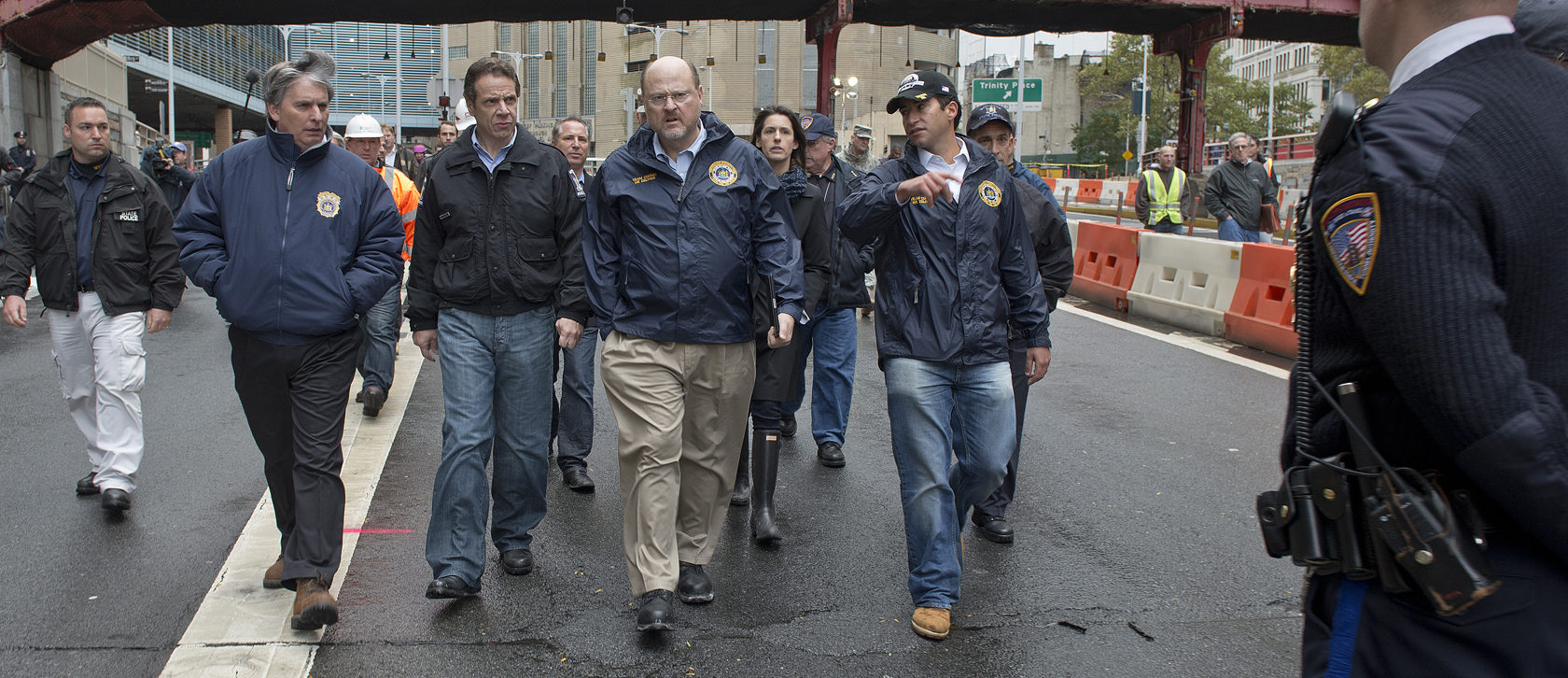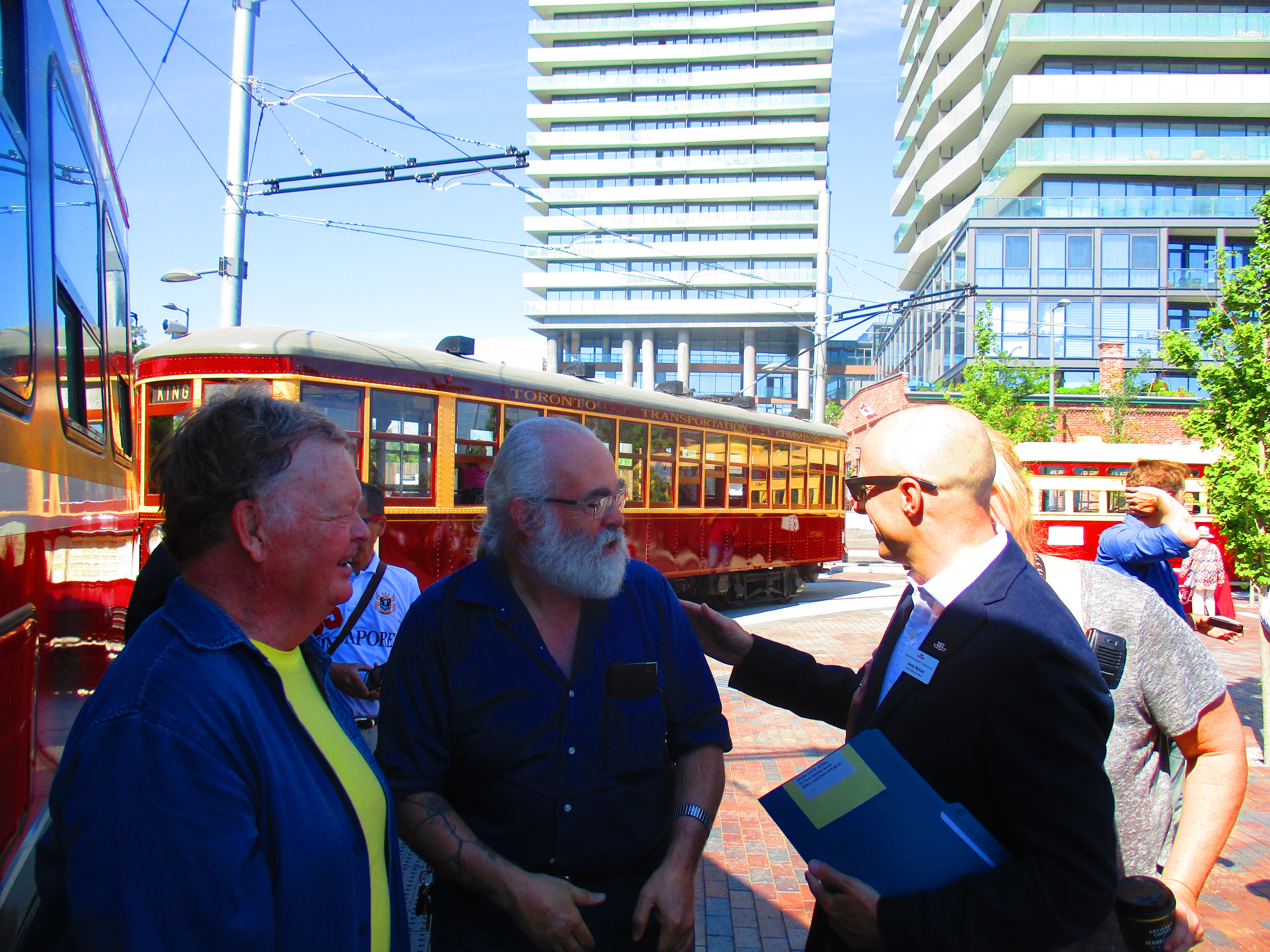
Transit service in New York City is not going to improve until the agency that provides it engages in some serious soul-searching. Last week, we joined with other pro-transit organizations in beseeching Governor Cuomo and his Metropolitan Transportation Authority chair Joe Lhota to change the culture of the agency. We also called for organizational reform in an opinion piece in the New York Daily News.
From the Governor to the front line staff, the entire MTA apparatus must be realigned to put its riders first. Internally, staff and leadership are not held accountable to the rider experience. Today, we are witnessing the consequences of the organization’s neglect of this principle: increased travel times on the subways and buses, elevators and escalators constantly breaking down, and a lack of urgency in core investments that would improve the situation.
How can MTA bring about this kind of reform? We’re glad you asked. Here are ten specifics. Some can be achieved by the people who work at the MTA, while others would require the MTA’s financial overseers in Albany to change their approach toward the capital plan. (These ideas aren’t all ours, and we have stolen liberally from reports by other organizations such as the Regional Plan Association, the Citizens Budget Commission, Straphangers, the Move New York coalition, testimony at the 2014 “reinvention” hearings, and transit agencies in other cities among other sources. However, responsibility for any errors in phrasing or portrayal is ours.)
- Step one is being honest about having a problem. The MTA should measure its service quality using rider-focused metrics, to give a more meaningful sense of the impact of delays, and hold staff and leadership accountable. We’ve written about this topic before, and even testified to the MTA board. The MTA should collect appropriate data on system operations, including using new technologies to build metrics that will be meaningful to riders, including tracking passenger wait times, overall travel times, and on-time performance. The agency should make this data public so riders and decision-makers can effectively hold the agency accountable to its performance metrics. The performance metrics the MTA currently collects and makes public fail to accurately represent the true scale of the underperformance of our buses and subways. Consequently, it’s difficult for agency staff, elected officials, or riders to understand the scope of the problem—or offer additional solutions to address delays. Communication style matters: San Francisco BART garnered community kudos and won a ballot measure for more funding in part because its Twitter feed was deemed so refreshingly honest by the public. In addition to the value these revealing statistics would provide to the public, they can be a management tool too. These metrics can be used to assess managerial effectiveness and compensation.
- Regardless of who appoints the board chair and/or CEO and regardless of whether he or she are one in the same or two different people, the board should set annual rider-focused performance metrics for those officer(s), and conduct an annual review of his or her performance, producing an evaluation, including decisions regarding salary, that relates to organizational performance. In turn, the board chair and/or CEO of the MTA should set performance metrics for the top officers of the constituent operating units (NYCT, LIRR, MNR, B&T) and publish an annual evaluation of each individual, including determination of any raise or bonus, which should be tied to organizational performance. Former Chair Richard Ravitch has correctly decried the current confusion about whether the board works for the Governor or for the public interest. That confusion will be reduced if the performance evaluation is based on the latter assumption.
- Empanel independent experts in engineering, construction and planning, including neutral parties from comparable cities, to examine and report publicly on why it is that virtually every MTA capital project is many times more expensive than comparable projects in peer cities, and why MTA capital projects chronically fail to meet deadlines, usually by many years. There are multiple causes of this debilitating pattern, and it is only by bringing those explanations to light that they can be remedied.
- During the next capital needs assessment (fall of 2018), empanel a body of neutral experts from other large, old systems (London, Paris, Boston, Chicago) to evaluate the MTA’s measures of attaining state of good repair (SGR) and evaluate whether the MTA’s approach would fulfill that goal. Budget practice should show depreciation as an expense that must be paid for, to more accurately reflect the true cost of taking care of system assets as they age.
- End the mirage of MTA capital planning being reliant on unenforceable “pledges” from state government, which are not binding on future legislatures or Governors and are thus subject to political turbulence. A $32 billion capital plan that is doled out $1 billion at a time during press conferences is not a plan, particularly when equivalent amounts are being cut, far from the klieg lights of those press conferences. Financial instability is antithetical to sound capital planning.
- A principle of good governance is that whoever’s paying the bill gets some responsibility for how the money gets spent. The corollary is that unlimited blank checks from one agency or level of government to another lead to distrust and waste when the “contributing” agency has no governance authority over the recipient. The MTA is controlled by the Governor and State Legislature, and so any local government “contributions” to the MTA capital plan or operations should be tied to specific outcomes being “purchased” by that local government. The fiscal relationship between the City of Seattle and King County Metro provides an instructive model of a city government “buying” particular services from a countywide transit agency that the city does not control. The City of Seattle government specifies what it is buying from the King County government, measured in units like service-hours, and tied to goals such as the percentage of city residents who live within walking distance of frequent transit service. If the City of New York chooses to contribute a certain amount of funds to the MTA, it should specify what goods those funds are spent on: for example, a certain number of stations rehabilitated, a specific quantity of bus service-hours added to underserved neighborhoods, or mitigation of planned fare increases for city residents.
- Local government contributions can also be tied to revenue sources in ways that make sense for good transportation policy. For example, the authority to impose taxes on For-Hire Vehicles (FHV) is currently used inconsistently, because app-enabled ride-hailing services are exempted, even though they increasingly contribute to traffic. East River bridges are a City-owned resource that are unpriced while the MTA-owned crossings are priced, and the Move New York plan would rectify that unfairness while simultaneously influencing unwanted automobile traffic downward while allowing transit service increases upward.
- The MTA and New York City DOT should sign a binding Memorandum of Understanding committing the two parties to specific joint actions to improve bus service, which require the two agencies to cooperate on street design and signal operations.
- The MTA should create a workplace environment that encourages and rewards talented employees. According to a recently released report by the University Transportation Research Center, the MTA has severe problems with employee satisfaction, with serious implications for productivity. The report highlights a prevailing mismatch between agency “authorities” and the expectations and preferences of less senior employees. One particularly alarming passage asserts that “from the bottom to the top of the organization, employees felt disrespected by the people above them. While some was due to what the employees felt to be inadequate compensation (including executive leadership), a large part was attributed to an arbitrarily punitive and rule-bound culture.” As a corrective, the report recommends that the agency relax restrictions wherever possible without compromising service and safety. It also stresses the need for opportunities for vertical interaction to create empathy and trust throughout the organization. That type of interaction might also speed ideas from throughout the agency to implementation.
- Perhaps most profoundly, the MTA needs to establish a far reaching vision for itself, establishing rider-focused values that will guide its future decisions, and help transform it into the transit agency that New York City deserves. To make this vision a reality, MTA needs to develop and implement a comprehensive strategic plan, something its peer cities, such as London, have already done. This plan would be more than just a report, but rather a “constitution” that unifies staff actions and decisions, and holds them accountable.
The MTA is a sprawling, complex institution, with decades of ingrained customs. Like all institutions, it is composed of people who have their habits as well as expertise. Changing the way it does business will require sustained attention for years. But such an intentional pivot is not without precedent. As CEO of the Toronto Transit Commission, Andy Byford has spent the last five years improving the once-beleaguered agency, both for customers and employees. During his address at Governor Cuomo’s recent “Genius” conference, Byford was emphatic that “improving transit in Toronto was a matter of changing organizational culture,” with pervasive reform of internal processes and unstinting honesty with the workforce and public. He brought in new management (including from the deep pool of talent at Transport for London) and set very basic goals on improving conditions that are important to riders, such as reducing bus bunching and improving station cleanliness. As CEO, Byford says he spends a lot of his time in the field, talking with line staff and riders. In recognition of his (and those he empowered within the agency)’s efforts, the TTC recently received the distinction of “Best Transit Agency in North America,” from the association of transit agencies, an award that would have been unthinkable for the TTC five years ago.

TTC Head Andy Byford routinely meets with Toronto transit riders
In fact, none of the international experts at the so-called “genius” event – transit CEOs from Paris and Tokyo as well as Toronto – revealed any exotic technologies or genius new ideas unavailable in New York. Instead, in essence they just talked about the fundamentals of good management.
Seoul, Stockholm, Frankfurt and hundreds of other cities with superior transit don’t have smarter people or more money than New York does. They simply have higher standards and expectations for what transit service should be like, and they have transit agencies which embody the attitude required to deliver that level of service. Despite the complexity inherent in any major transit system, those cities’ agencies perform by adhering to simple principles that would work just as well for New York’s MTA: candor about the performance issues that exist, willingness to question how things are currently done, and rewards for changes that bring results.
 On the Brink: Will WMATA’s Progress Be Erased by 2024?
On the Brink: Will WMATA’s Progress Be Erased by 2024?
The experience of being a WMATA rider has substantially improved over the last 18 months, thanks to changes the agency has made like adding off-peak service and simplifying fares. Things are about to get even better with the launch of all-door boarding later this fall, overnight bus service on some lines starting in December, and an ambitious plan to redesign the Metrobus network. But all of this could go away by July 1, 2024.
Read More Built to Win: Riders Alliance Campaign Secures Funding for More Frequent Subway Service
Built to Win: Riders Alliance Campaign Secures Funding for More Frequent Subway Service
Thanks to Riders' Alliance successful #6MinuteService campaign, New York City subway riders will enjoy more frequent service on nights and weekends, starting this summer. In this post, we chronicle the group's winning strategies and tactics.
Read More